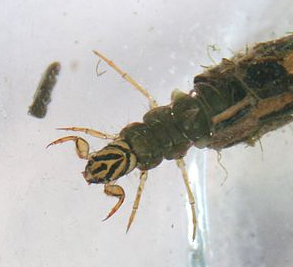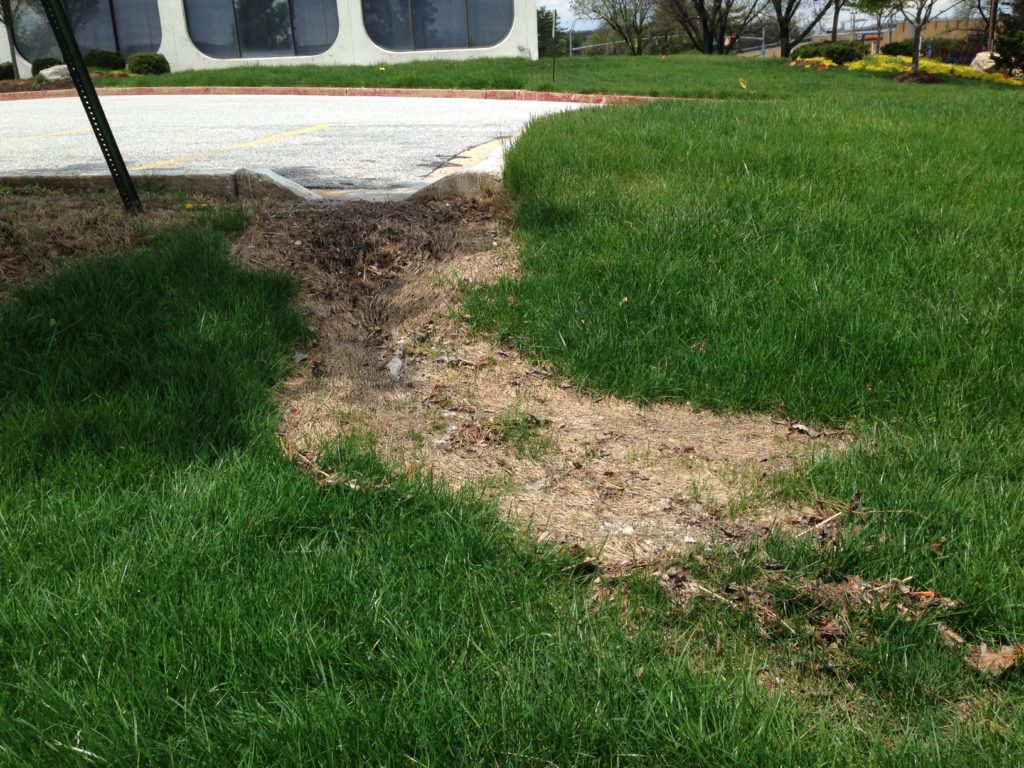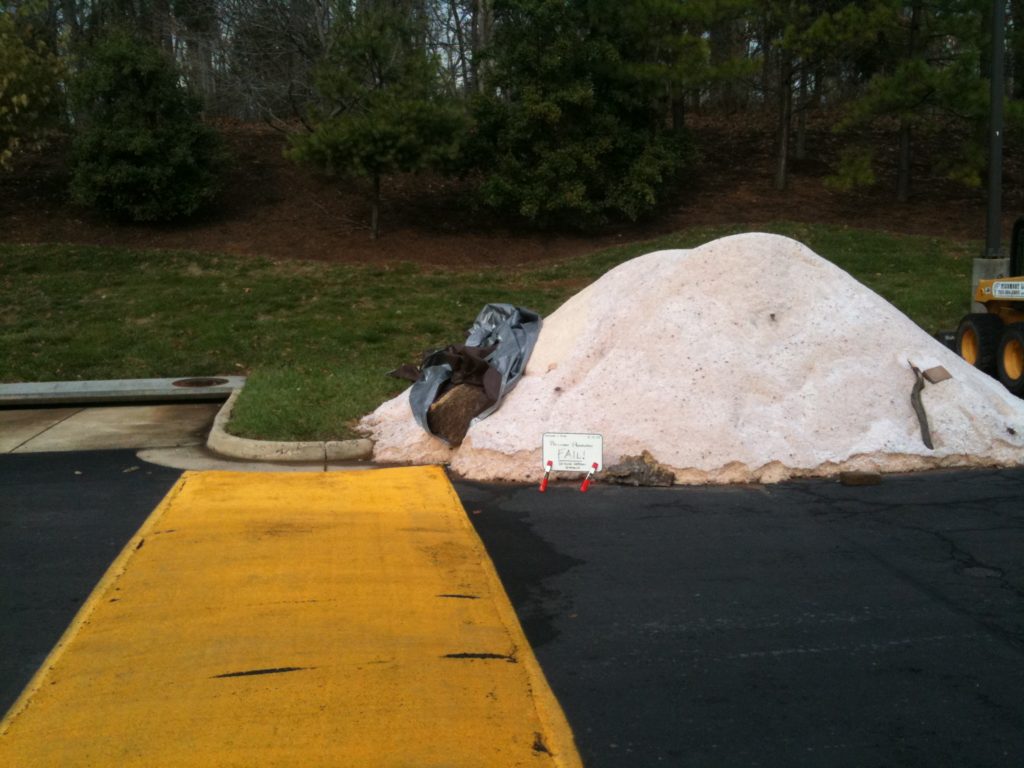After the snow and ice of winter, one question lingering in our minds is, what is the environmental impact of all that road salt?
Impacts of salt
As snow melts, it carries road salt into waterways that are normally fresh water. Salt laden snowmelt can flow directly into streams, or partially infiltrate into the ground via roadside stormwater facilities. Streams are fed by groundwater that flows to the surface. According to a report by Maryland’s Department of Natural Resources (DNR), some plants and animals can tolerate the spikes in salinity levels that follow a snowfall event, and others cannot. (Several other sources are also referenced – see below.)
Near the bottom of the food chain, mayflies, stoneflies, and caddisflies are particularly sensitive to changes in salinity. These insects are an important food source for birds and fish. Brook trout is noted as a fish species found in Maryland streams most sensitive to changes in salinity. Many types of amphibians, such as frogs and salamanders, are affected by increased salinity, especially those that lay eggs near the bottom of ponds where salt concentrations are highest.

Studies show that birds that ingest salt crystals can die within 45 minutes. Salt can also be fatal to other small animals, such as rodents, that eat leaves coated in salt dust, or breathe it in.
Roadside grasses and other vegetation can be killed off by road salt. These plants are important for preventing soil erosion. All types of vegetation, even trees, can be killed off, or at least weakened, by road salt when they are coated in it due to spray from traffic, or by taking up salty snowmelt through their roots.

Studies also show that road salt increases salinity in our drinking water reservoirs. Measurements of salinity in reservoirs going back to the 1980s show a steady increase over the past few decades.
Are there alternatives?
Removing ice and snow from roadways is important for creating safer driving conditions during and after snowfall events, so, are there any alternatives to salt?
Sand can help with traction and it is already often mixed with road salt, but used by itself it does not melt ice. Calcium chloride, magnesium chloride, and potassium chloride are alternatives to rock salt that have less of an impact on vegetation, but they still introduce chloride pollutants into runoff and are more expensive. Beet juice has been used as a more natural, biodegradable de-icer, however it also costs more than salt and it may not have been as effective.
Cheese brine has also been used, and while it is a good idea to find uses for manufacturing by-products, its ecological impacts are unstudied, and therefore unknown. MDE’s web page, “411 on Road Salt” says that Maryland’s SHA has been experimenting with all of these alternatives as well as finding ways to reduce the amount of salt they use.
Other alternatives include calcium magnesium acetate and sodium acetate, which also reduce corrosion on metal infrastructure such as bridges. Cost is an issue with these products and they may not be as effective at lower temperatures.
What else can we do?
A couple of things can be done to reduce the impact of deicing.
Two of the most obvious actions that can be taken are to minimize the times when de-icing is used and to reduce the amount of de-icer that is applied. However, each of these can increase the risk of slippery conditions.
When we perform stormwater inspections for property owners and property managers, we also inspect the overall site. In many cases we find that salt and de-icers are not stored appropriately of covered, as shown below. Proper storage not only reduces pollution from rainfall, but it can also reduce wasted product.

The good news
One piece of good news is that pretreating roads with salt brine, a relatively new practice, can reduce the use of salt in multiple ways. Brine can’t be blown away by wind or bounced off the road by traffic, so waste is reduced. This pre-treatment also begins to melt snow as soon as snowflakes touch the road, which makes it more efficient, resulting in less salt needed throughout a snowfall event.
Getting technical
For further reading, see the resources used for this blog post:

